 It is very dark at 0530 at Sedgefield Country Club and the place is extremely busy. I opened the Tournament HQ and simply watched the activity. Across the street, the greenskeepers are working to reset the pin locations for today’s practice pro-am.
It is very dark at 0530 at Sedgefield Country Club and the place is extremely busy. I opened the Tournament HQ and simply watched the activity. Across the street, the greenskeepers are working to reset the pin locations for today’s practice pro-am.
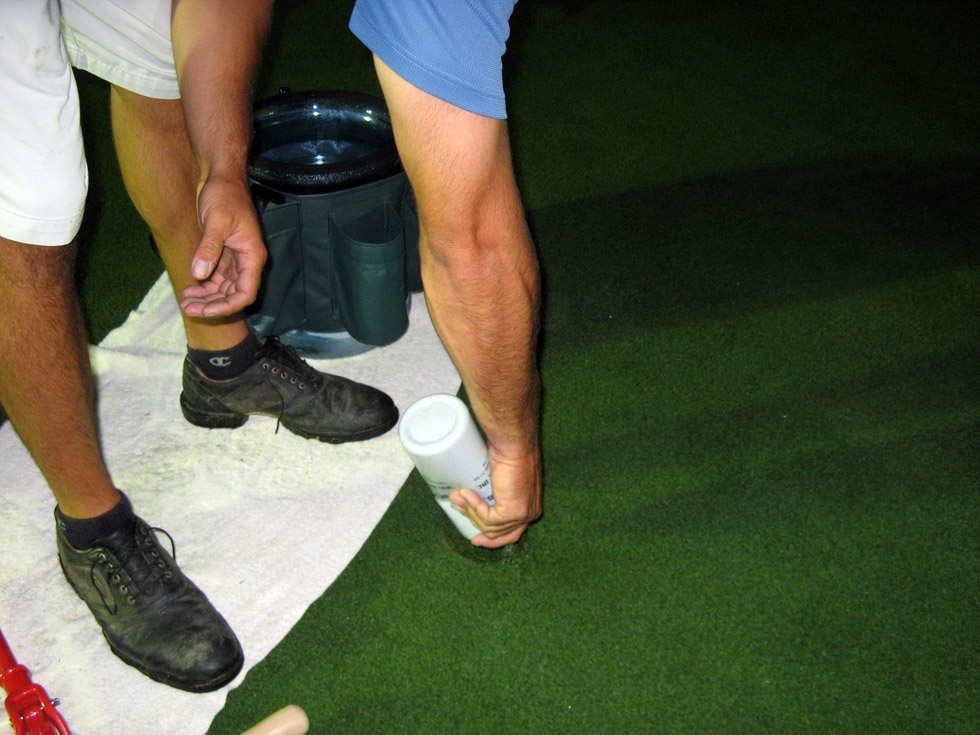
Spray painting the rim of the cup white so it can be perfectly dry before putting begins.
I decided to wander into the putting area and was fortunate to meet up with Zeke, a member of the grounds crew who was plugging old holes and setting new holes. Zeke, who is leaving SCC at the end of the week, has been accepted to the DEA and will start the 20-week course at Quantico to train to be an agent. In the meantime, he has worked in the North Carolina area for a number of years. I learned that members of the greens staff travel around to help other courses get their holes ready for play. Zeke has been to Quail Hollow and Bryan Park (US Public Links) among others in the past years.
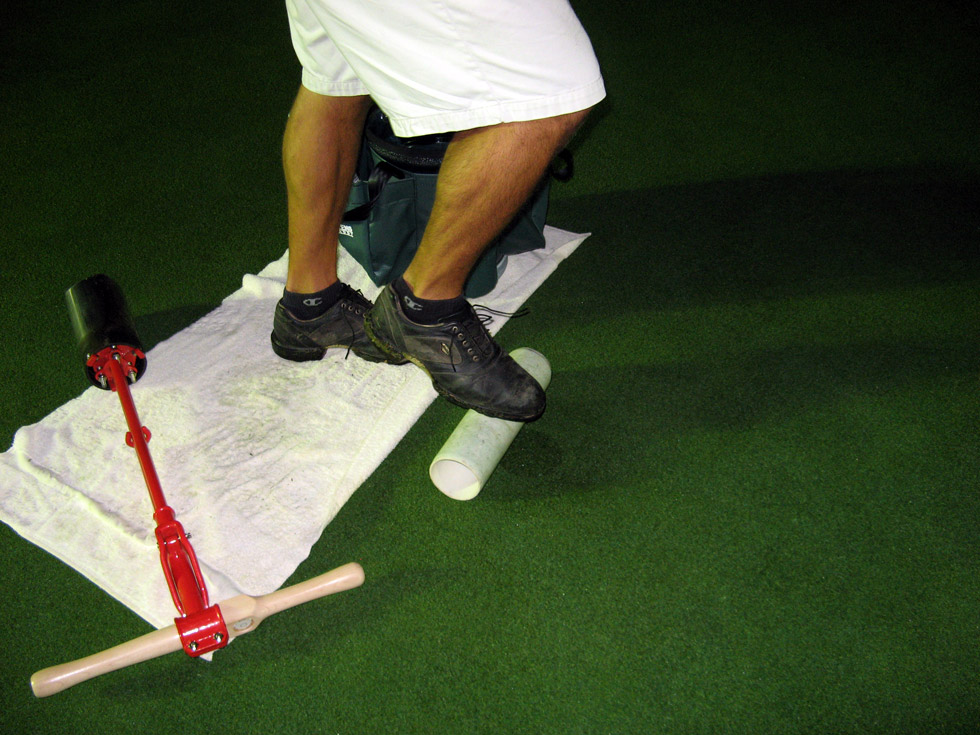
Rolling a plug after it is replaced into yesterday’s hole location.
“The greens you see on TV are literally moments away from dying.” Really? I had no idea that to get the greens hard and fast, as per tournament golf, one needs to find the perfect balance between life and death of grass. We talked about soil moisture content (right now there is too much water in the soil for their liking), air temperature (the big fans keep the grass canopy slightly cooler), when to water (don’t water in the middle of the day or you will kill your grass), and how deep to set the holes (deeper during PGA events as caddies often slam the flag sticks back into the cups – hard)!
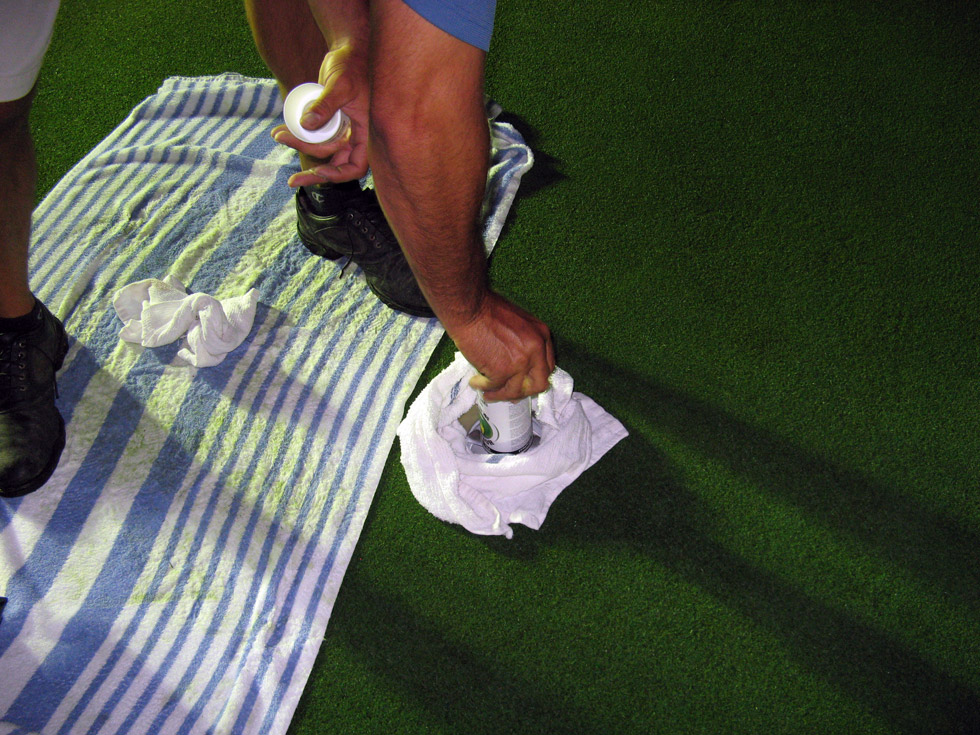
To paint the cup properly, one uses a metal template that fits over the hole and holds the paint can upside down to allow uniform coverage while the can is rotated in a circle. The towel keeps any drift from settling on the putting green.
I have played golf for more than a decade and I had no idea HOW a hole literally gets into the green. This past year I was given a cup and flagstick by a local golf course super for my backyard. I dug a hole with a shovel, put the cup in the ground, and packed the soil back around the cup. Needless to say, it didn’t work out so well, nor was my wife pleased with the “half-baked cup-thingy” sticking out of the backyard!
“You can’t do it without the proper tools,” Zeke laughed at my story of backyard stupidity. Watching him put the hole in the ground with the proper tool seemed ridiculously easy – for him! It was as simple as slam the circular excavating tool into the ground, shake it around for a minute, push the lever, and remove! There is no way I could do that without seriously hurting myself! They then set the cup down into the hole, use a template to paint around the rim, and it is ready for the balls to drop!
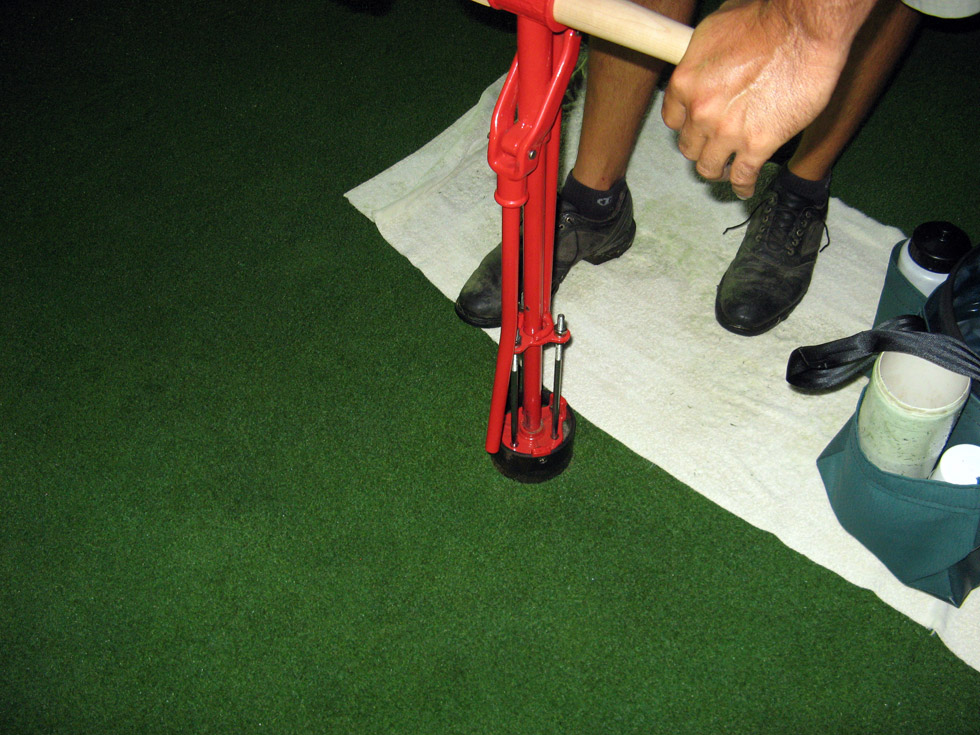
A more high-tech digging tool. The lever eliminates the need to jump up and down to get the hole in the ground, essential for keeping the greens perfectly perfect!
“The real artistry is putting the new plug back in the yesterday’s hole.” No kidding. There is a wonderful dance that begins with the adding of the old plug back into the ground. One of the issues here is to be sure that the turf going back into the ground matches up with the actual grass level around it; if not, there is some important work to be done, namely scooping some official USGA “sandy soil,” by hand. Once the turf is leveled, it gets rolled (by foot, with a round plastic roller), the turf gets matched and weaved together with a little fork (sorta like a divot repair tool), and finally hand-watered (with a squirt bottle).
What is my take-home lesson from these folks? They wake up really, really early (mowers on the course before 5 am). They have some nifty toys and tools to take care of the green stuff that we play on. They really are some of the most overlooked folks out here on the course. Their work is completed before (most) of the players arrive and they have to wait until the players are gone before they go out and take care of the surfaces that need to be “Tour-perfect.”
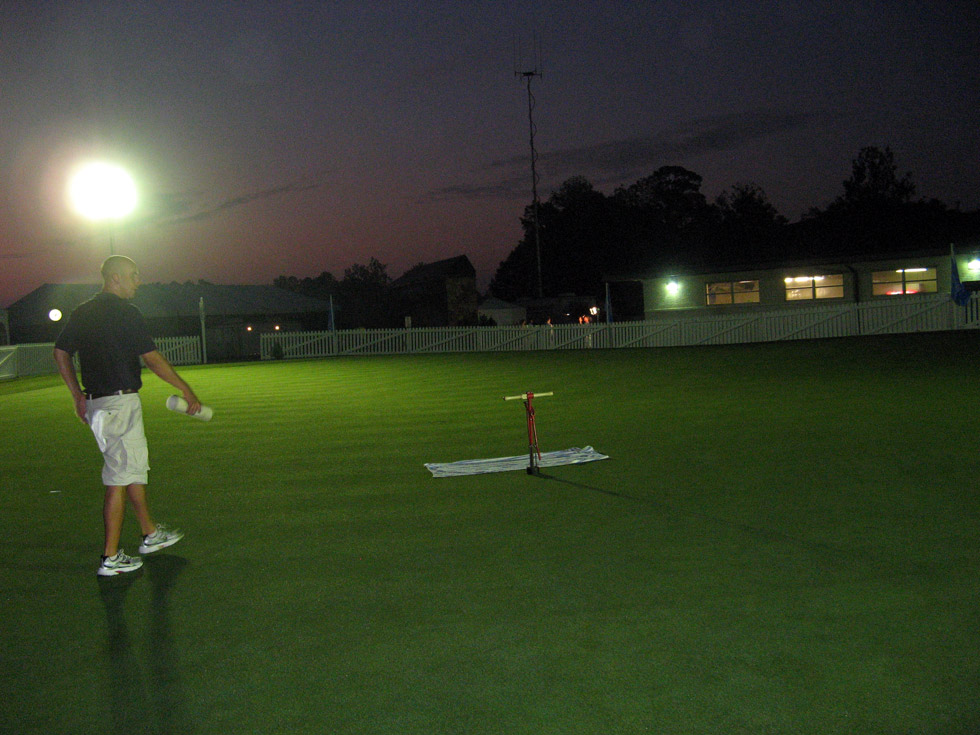
Predawn on the putting green at the Wyndham… only the grounds crew are active cutting the new holes.
It is now 5:30 pm and I am looking at the putting green and as I watch the players putt a little, chat on their cell phones, try out new putters, talk with each other, I can’t help but realize that none of these guys will ever know Zeke. They won’t know how hard he worked to get the greens ready nor will they know how he will be a part of guarding our Nation’s security for the next 20 years. Good luck Zeke, and thanks.
This article was written by Bryan Brendley, a friend and long-time reader of The Sand Trap.

Great article!